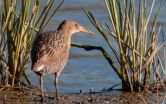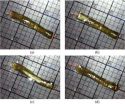New genetic sequencing methods mean quicker, cheaper, and accurate embryo screening
2014-05-31
(Press-News.org) Results from the first study of the clinical application of next generation DNA sequencing (NGS) in screening embryos for genetic disease prior to implantation in patients undergoing in-vitro fertilisation treatments show that it is an effective reliable method of selecting the best embryos to transfer, the annual conference of the European Society of Human Genetics will hear tomorrow (Sunday). Dr Francesco Fiorentino, from the GENOMA Molecular Genetics Laboratory, Rome, Italy, will say that his team's research has shown that NGS, a high throughput sequencing method, has the potential to revolutionise pre-implantation genetic screening (PGS). The technique can result in reduced cost, faster results, and accurate identification of good embryos resulting in more ongoing pregnancies, he will say.
The researchers undertook a prospective, double blind trial using two methods of embryo screening, NGS, and the older method array-comparative genomic hybridisation (Array-CGH) of 192 blastocysts, or early embryos, obtained from 55 consecutive clinical pre-implantation genetic screening (PGS) cycles. Array-CGH was the first technology to be widely available for the accurate analysis of chromosomal abnormalities in the embryo and is used extensively across the world for this purpose.
Fifty five patients with an average age of 40 years were enrolled; in 45 cases they were undertaking IVF because of advanced age and in ten because of repeated IVF failures. Two different teams of researchers carried out biopsies and analysed the genetic make-up of the embryos at between five and six/seven days, depending on the speed of growth, and then measured the consistency of the diagnosis by comparing results from the two sequencing methods.
This comparison showed concordant results for 191 of the 192 embryos analysed. One embryo showed a false positive for three copies of chromosome 22 (trisomy 22) using the NGS technique. But analysis of this embryo also showed concordance between the two methods in detecting several other chromosomal abnormalities, and it would therefore have been ruled for transfer in any event. There were no other false negative diagnoses for chromosome abnormalities, and no inaccurate predictions of gender. NGS also showed itself to be as capable of identifying small, difficult to detect abnormalities.
"We found that results from the NGS and array-CGH diagnostic tests were highly concordant," Dr Fiorentino will say. "NGS allowed us to detect a number of different abnormalities in 4608 chromosomes with a very high degree of accuracy, and following the transfer of 50 healthy embryos in 46 women, 30 pregnancies continued."
These pregnancies were confirmed by the presence of a foetal sac and a heartbeat, and all have now completed at least 20 weeks of gestation.
PGS has been the subject of controversy over recent years. Initially hailed as an opportunity to improve clinical outcome in sub-fertile patients undergoing IVF, a number of studies later appeared to show that it might not help to identify and select chromosomally normal embryos for transfer based on its lack of benefit with respect to improving life birth rates.
"However, these studies used an older screening technique, fluorescent in-situ hybridisation (FISH)," says Dr Fiorentino, "and we hypothesised that NGS might come up with more accurate results. The results of our study have proved this to be the case, and that NGS can improve clinical outcomes. We expect that the use of NGS technologies will increase as evidence of their utility becomes better-known.
"A further advantage of the technique is that it is quicker and cheaper, while remaining just as sensitive as other methods of screening. Our next step will be to participate in a large randomised controlled trial, the results of which will be critical for the acceptance of NGS-based pre-implantation embryo assessment into wider clinical practice."
INFORMATION:
Abstract no: P01.023/S
ELSE PRESS RELEASES FROM THIS DATE:
'Often and early' gives children a taste for vegetables
2014-05-31
Exposing infants to a new vegetable early in life encourages them to eat more of it compared to offering novel vegetables to older children, new research from the University of Leeds suggests.
The researchers, led by Professor Marion Hetherington in the Institute of Psychological Sciences, also found that even fussy eaters are able to eat a bit more of a new vegetable each time they are offered it.
The research, involving babies and children from the UK, France and Denmark, also dispelled the popular myth that vegetable tastes need to be masked or given by stealth in ...
Building a better blood vessel
2014-05-30
Boston, MA – The tangled highway of blood vessels that twists and turns inside our bodies, delivering essential nutrients and disposing of hazardous waste to keep our organs working properly has been a conundrum for scientists trying to make artificial vessels from scratch. Now a team from Brigham and Women's Hospital (BWH) has made headway in fabricating blood vessels using a three-dimensional (3D) bioprinting technique.
The study is published online this month in Lab on a Chip.
"Engineers have made incredible strides in making complex artificial tissues such as ...
Eradicating invasive species sometimes threatens endangered ones
2014-05-30
What should resource managers do when the eradication of an invasive species threatens an endangered one?
In results of a study published this week in the journal Science, researchers at the University of California, Davis, examine one such conundrum now taking place in San Francisco Bay.
The study was led by UC Davis researcher Adam Lampert.
"This work advances a framework for cost-effective management solutions to the conflict between removing invasive species and conserving biodiversity," said Alan Tessier, acting deputy division director in the National Science ...
New NASA/JAXA precipitation satellite passes check-out, starts mission
2014-05-30
The new Global Precipitation Measurement Core Observatory satellite is now in the hands of the engineers who will fly the spacecraft and ensure the steady flow of data on rain and snow for the life of the mission. The official handover to the Earth Science Mission Operations team at NASA's Goddard Space Flight Center in Greenbelt, Maryland, on May 29, marked the end of a successful check-out period.
The Global Precipitation Measurement (GPM) mission is a joint mission between NASA and the Japan Aerospace Exploration Agency. Its Core Observatory launched on Feb. 27, 2014, ...
Wallow Fire study suggests there may be multiple paths to fuel reduction in the WUI
2014-05-30
Conservative fuel treatments designed to reduce fire severity while still providing forest cover and wildlife habitat worked equally as well as more intensive treatments in allowing for the protection of homes during the 2011 Wallow Fire, a study published in the journal Forest Ecology and Management has found. The distance into the treated area where fire severity was reduced varied, however, between these different thinning approaches where fuels were reduced. The findings suggest that there may be multiple paths to fuel treatment design around the wildland-urban interface ...
A first for NASA's IRIS: Observing a gigantic eruption of solar material
2014-05-30
VIDEO:
A coronal mass ejection burst off the side of the sun on May 9, 2014. The giant sheet of solar material erupting was the first CME seen by NASA's Interface...
Click here for more information.
A coronal mass ejection, or CME, surged off the side of the sun on May 9, 2014, and NASA's newest solar observatory caught it in extraordinary detail. This was the first CME observed by the Interface Region Imaging Spectrograph, or IRIS, which launched in June 2013 to peer into ...
Myriad presents data on BRACAnalysis CDx and HRD at 2014 ASCO meeting
2014-05-30
SALT LAKE CITY, Utah, May 30, 2014 – Myriad Genetics, Inc. (NASDAQ: MYGN), a global leader in molecular diagnostics, announced the presentation of new data at the American Society of Clinical Oncology (ASCO) meeting this week that supports the clinical efficacy of its BRACAnalysis CDx™ and HRD™ tests in predicting platinum based therapy response for breast cancer patients. Additionally, the company is providing an update on key commercial milestones that underscore its commitment to the field of companion diagnostics.
"Myriad is committed to advancing the science of companion ...
New method of wormlike motion lets gels wiggle through water
2014-05-30
Next time you spot an earthworm sliding through fresh dirt, take a closer look. What you're seeing is an organic movement called peristaltic locomotion that has been meticulously refined by nature.
Jarod Gregory, an undergraduate student in the University of Cincinnati's College of Engineering and Applied Science, used a worm's contracting and expanding motion to provide a way for gels to swim in water. This is a product of work by the interdisciplinary team consisting of Jarod Gregory, a chemical engineering major, and his two advisers, Lilit Yeghiazarian, assistant ...
New drug treatment helps prevent early menopause in breast cancer patients
2014-05-30
MAYWOOD, Ill. (May 30, 2014) – Among young women treated for breast cancer, one of the most distressing side effects of chemotherapy is early menopause. But a major clinical trial has found that the risk of early menopause can be significantly reduced by adding a drug called goserelin to the chemotherapy regimen. Also, women who took goserelin and wanted to have children were more likely to get pregnant and deliver a healthy baby.
Results were released during the 2014 American Society of Clinical Oncology 50th Annual Meeting in Chicago. Kathy Albain, MD, of Loyola University ...
Stopping statins may benefit terminally ill patients
2014-05-30
Results presented today at the 50th Annual Meeting of the American Society for Clinical Oncology (ASCO) and June 6 at the European Association of Palliative Care Research Conference show that stopping statins for cholesterol management in the late stages of cancer or other terminal illnesses may offer quality-of-life and even life-extending benefits. The results highlight the larger question of when, if ever, it is appropriate in patients with life-limiting illnesses to discontinue medications prescribed for other conditions that will likely not lead to their death.
Researchers ...






